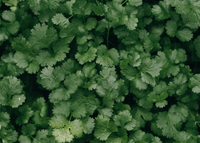The days may still be short and cold, but February actually offers an abundance of opportunity to get started on garden seedlings
Since the weather can still be unpredictable this month, it’s best to pay attention to this year’s growing conditions before you start planting your garden. Year to year, you’ll notice variations in weather and microclimates in your area, so take note this year so you can compare for next year. It’s great to look back on notes and be able to apply personal information that will help your garden be best suited to your climate, yard and field.
You’ll also want to check frost dates, as many of the planting days will depend on the last frost date for your area. You can find out your plant hardiness zone and frost dates through these hyperlinks.
Now that you know your zone and climate, let’s get gardening...
Garden veggies to start indoors in February
 Photo by Nigel Cohen on UnsplashStarting seedlings indoors requires a bit of setup in your home or garage and some gear. You’ll need containers, seed-starting mix, grow lights, capillary mats and a table or shelf.
Photo by Nigel Cohen on UnsplashStarting seedlings indoors requires a bit of setup in your home or garage and some gear. You’ll need containers, seed-starting mix, grow lights, capillary mats and a table or shelf.
Peppers: 8 to10 weeks before your last frost date
- Zone 7+: Early February
- Zone 5–6: Mid- to end of February
- Zone 3–4: Too early!
Onions/Leeks: 10 to 12 weeks before your last frost date
- Ideally started in January, but if not, anytime in February will do fine to start these seedlings
Tomatoes/Eggplants: 6 to 8 weeks before your last frost date
- Cold hardy varieties, for hoop houses or greenhouses
- Zone 7+: Early February for under protection, end of February without protection
- Zone 5–6: Mid- to late February
- Zone 3–4: Too early!
Hardy lettuces/Spinach/Swiss Chard/Kale/Asian Greens: 6 to 8 weeks before your last frost date
- Zone 7+: Early February
- Zone 5–6: Mid-February unless under a hoop
- Zone 3–4: Late February but plan to use a hoop
Celery: 7 to 12 weeks before your last frost date
- Zone 7 +: Early to mid-February
- Zone 5–6: Mid-February
- Zone 3–4: Too early!
Peas: 6 to 7 weeks before your last frost date
- Zone 7+: Early to mid-February
- Zone 5–6: Mid to End of February
- Zone 3–4: Too early!
Garden veggies to plant outdoors in February
 Photo by Matt Seymour on UnsplashCabbage/Cauliflower/Collards/Kohlrabi/Brussels Sprouts: 5 to 7 weeks before your last frost date
Photo by Matt Seymour on UnsplashCabbage/Cauliflower/Collards/Kohlrabi/Brussels Sprouts: 5 to 7 weeks before your last frost date
- Zone 7+: Any time in February, the earlier the better
- Zone 5–6: Mid-February but with row cover
- Zone 3–4: Too early!
Garden herbs to start as seedlings in February Photo by Do Huong on Unsplash
Photo by Do Huong on Unsplash
- Lemon balm: 6 to 8 weeks before your last frost date
- Mint: 12 to 14 weeks before your last frost date
- Oregano: 12 to 14 weeks before your last frost date
- Parsley: 12 to 14 weeks before your last frost date
- Sage: 6 to 8 weeks before your last frost date
- Savory/Rosemary: 6 to 8 weeks before your last frost date
- Thyme: 8 to 12 weeks before your last frost date
- Basil: 6 to 8 weeks before your last frost date
- Catnip: 8 to 12 weeks before your last frost date
- Chamomile: 8 to 12 weeks before your last frost date
- Chives: 12 to 14 weeks before your last frost date
- Coriander: 6 to 8 weeks before your last frost date
- Dill: 6 to 8 weeks before your last frost date
Who knew that so many garden goodies could grace our February days? Starting your indoor seedlings will help your veggies get a head start on growing, which means you can get a head start on eating them... some as early as March!
Remember not to stress if you can’t or haven’t started anything in February; this is for us eager gardeners. Have fun, start what you can, and relish in the fact that you’re growing even a bit of your own food.

